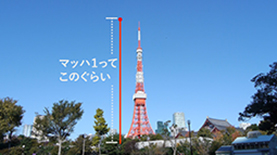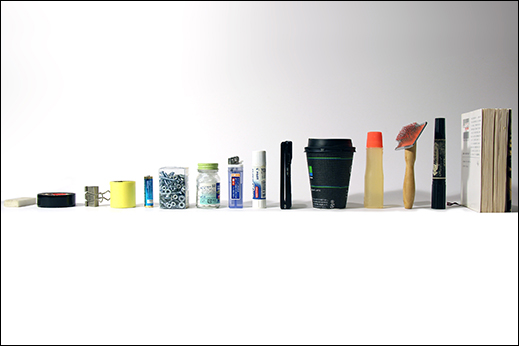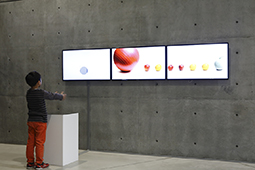 |
Focus features two in-depth reviews each month of fine art, architecture and design exhibitions and events at art museums, galleries and alternative spaces around Japan. The contributors are non-Japanese art critics living in Japan. |
|
|
 |
 |
 |
An Exhibition that Measures Up: Learning About the Science of Measurement at 21_21 DESIGN SIGHT
James Lambiasi |
 |
Exhibition view (Photo: Keizo Kioku) |
|
Gallery 2 (Photo: Keizo Kioku) |
Would you know one pound if you held it in your hands? Probably not. In fact, the units and measurements that we use in our everyday lives are most likely taken for granted by most of us, which is all the more reason to see Measuring: This Much, That Much, How Much?, an exhibition currently being held at 21_21 DESIGN SIGHT in Roppongi, Tokyo. The show is unique in that it addresses the very abstract subject of gwhy we measure," and it is entirely devoted to conveying understanding, explaining the history, and introducing creative ways to visualize the importance of measuring in our lives.
Led by art director and graphic designer Norio Nakamura, the exhibition is the creative culmination of work by both an Exhibition Planning Team who created displays that are visually explanatory in nature, and specially invited participating creators who added their own artistic interpretations of measuring. The explanatory exhibits make units and measuring excitingly tangible as one can experience units, make comparisons, see different measuring devices used throughout history, and understand more abstract units such as power from the sun. For example, a series of bags of various weights enables one to compare and understand the difference between one kilogram and one pound. Other exhibits reveal the long history that humankind has achieved in developing measurement systems. As an example of this, the display titled Carpenter and His Square shows the ways in which a Japanese carpenter has utilized a typical shaku, or square device, by ingeniously positioning and moving it in various ways to measure a vast array of items.
 |
|
 |
|
|
|
Exhibition Planning Team, Things You Can Do with 10 People (Photo: Kazue Kawase) |
|
Exhibition Planning Team, Comparison of Speed: How Much is Mach 1? (Image: Syunichi Suge) |
|
 |
|
Exhibition Planning Team, Comparison of Length - Rules from 1 to 100 (Photo: Norihiko Terayama) |
|
In addition to installations provided by the Exhibition Planning Team, several creators from a broad range of backgrounds have been invited to contribute more artistic interpretations of measuring. The exhibit How Big Is an Apple? uses a 3D computer simulator to inform the viewer if one is able to mimic the size of an apple when cupping one's hands together. Pen and Distance allows one to perceive a typical ballpoint pen by the amount of ink it is able to produce; this is visualized by exhibiting the scribbled notebook pages produced until the single pen went dry.
 |
|
 |
|
|
|
Helmut Smits, 1 Meter Party, © Helmut Smits (Photo: Lotte Stekelenburg)
|
|
Perfektron, How Big Is an Apple?, © Perfektron (Photo: Keizo Kioku)
|
This exhibition helps one gain through skillfully presented visual materials a broader perspective on "why we measure." It provides a holistic view that allows one to comprehend the notion that we indeed take the importance of units and measurements for granted, and that perhaps the reason they are so invisible to us is the ubiquitous permeation of measuring in our everyday lives.
With an emphasis on the educational value of the exhibition, all of the explanations are accompanied by English translations. The show is ideal for children, as many of the exhibits have cleverly visualized units in fun ways. Be sure to check out the Measuring Shop as well, a free-admission shop that offers several products related to units of measurements.
 |
|
 |
|
|
|
Exhibition Planning Team, Everyday Science
(Photo: Keizo Kioku) |
|
Exhibition Planning Team,
Comparison of Length - Rules from 1 to 100
(Photo: Keizo Kioku) |
 |
 |
James Lambiasi
Having completed his Master's Degree in Architecture from Harvard University Graduate School of Design in 1995, James Lambiasi has been a practicing architect and educator in Tokyo for over 20 years. He is the principal of his own firm Lambiasi + Hayashi Architects, has taught as a visiting lecturer at several Tokyo universities, and has lectured extensively on his work. James served as president of the AIA Japan Chapter in 2008 and is currently the director of the AIA Japan lecture series that serves the English-speaking architectural community in Tokyo. He blogs about architecture at tokyo-architect.com. |
|
 |
|